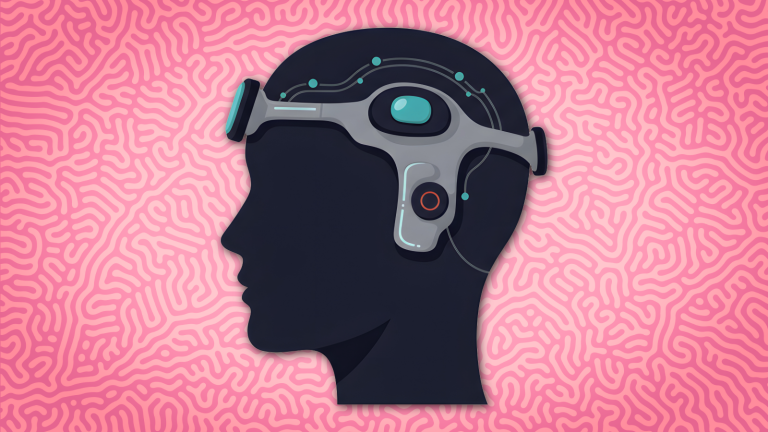Everyone – ourselves included – is talking about AI these days, for good reason.
AI models now draft legal contracts, design chips, code software, edit videos, discover drugs, even run autonomous labs. This technology is restructuring entire industries in real time, from finance to filmmaking to factory floors. The speed and scale of this transformation is unlike anything we’ve seen since the internet… possibly ever.
But as we all race to invest in this once-in-a-century innovation, there’s a natural question emerging among forward-thinkers: What comes after?
What’s the next exponential technology wave that could reshape the world – and mint fortunes for those who see it early?
Well, if AI is a brain outside the body, then the next step could be to bring it into the human loop literally.
Let us introduce you to brain-computer interfaces (BCIs): the science-fiction-sounding idea that might just become the next trillion-dollar tech trend.
It sounds like a plot point from “Black Mirror” (and it could be). Yet this is a very real, very investable, and possibly very lucrative trend – if you catch the wave early enough.
Here’s the scoop.
What Are Brain-Computer Interfaces? A Quick Primer on BCIs
Brain-computer interfaces are systems that allow your brain to communicate directly with computers or other devices, bypassing touchscreens, keyboards, and voice commands.
Instead, BCIs read your brain’s electrical signals and translate them into digital instructions. Think: moving a cursor with your mind, typing with thoughts, or controlling a robot arm with a mere intention.
It sounds wild – and it is. But it’s also already making a real-world impact.
Over the last decade, advances in neuroscience, computing, and miniaturized sensors have pushed BCIs from theory to practice.
There are two main types:
- Invasive BCIs, like Elon Musk’s Neuralink, which are surgically implanted into the brain.
- Non-invasive BCIs, like EEG headsets or neuro-sensing headbands, which detect electrical activity from outside the skull. This variation is safer, cheaper, and much closer to mass-market deployment.
And both categories are seeing remarkable progress.
The Cutting Edge of Brain-Computer Interfaces in 2025
Neuralink recently made headlines with its first human implant, enabling a quadriplegic man to move a computer cursor with his thoughts.
Synchron, another brain-implant startup, is already conducting human trials with a less invasive device that’s inserted via blood vessels.
Meanwhile, non-invasive players like Emotiv, Neurable, and Kernel are building sleek neurotech headsets that track focus, mood, and mental fatigue. And some even let you play simple video games just by thinking.
Governments are pouring billions into BCI research as well, with the U.S. Defense Advanced Research Projects Agency (DARPA) funding programs like NESD (Neural Engineering System Design) to develop high-bandwidth brain interfaces.
And elite university labs are making large strides as well. For example, Stanford’s Wu Tsai Neurosciences Institute helped restore movement in paralyzed patients using brain signals. UCSF researchers recently decoded words from brain activity to give voice to the voiceless. And at MIT, scientists have demonstrated non-invasive BCIs that can interpret inner speech and control devices through thought alone.
In our view, the potential applications are staggering:
- Medical restoration: Helping paralyzed patients control prosthetics, communicate, and/or regain motor function.
- Wellness & cognition: Monitoring stress, mood, attention; perhaps one day enhancing memory or learning speed.
- Gaming & VR: Mind-controlled avatars, immersive gameplay without controllers.
- AR glasses & hands-free computing: Ditch the keyboard and touchscreen – just think and go.
- Human-AI fusion: Working with AI in real-time through a brain link, like “Minority Report” meets ChatGPT.
But let’s come back to Earth and consider the nearer-term impacts…
Consumer Neurotech: The First Mass-Market BCI Opportunity
While invasive BCIs are world-changing for medical patients, they’re not going mainstream any time soon. After all, most people wouldn’t line up for brain surgery just to forgo using a mouse.
That’s why we think the real BCI market in the next decade will be consumer neurotech.
Think headbands, glasses, earbuds, and wearable devices that read your brain signals non-invasively to improve mental performance, help you focus, detect early signs of illness, or allow you to navigate digital interfaces hands-free.
In our opinion, this is where the investment opportunity gets really spicy…
Because this future is already in the works.
- Social media firm Snap (SNAP) has acquired NextMind, a neurotech startup that enables mind-controlled interaction with AR interfaces.
- Meta (META) bought CTRL-labs, which built a wristband that reads neural signals from your arm – potentially the secret sauce for future hands-free AR control.
- Kernel has released commercial-grade helmets that track real-time brain activity for cognitive performance.
- Emotiv is already selling EEG-based devices for meditation, gaming, and productivity tracking.
- Sony (SONY) has patents for brainwave-integrated VR.
- Apple (AAPL) and Alphabet (GOOGL) haven’t gone public with any neurotech products… but they’re quietly hoarding patents and talent in this space.
What does all this mean?
It means BCIs aren’t just coming someday – they’re coming soon.
And according to conservative estimates, the consumer neurotech market could be worth $20- to 100 billion-plus by 2035, depending on adoption rates and regulatory advances.
How to Best Invest in Brain-Computer Interfaces Right Now
The tricky part for investors here is that many of the most exciting neurotech startups are still private.
But the good news is that major public companies are already quietly building, buying, or powering the future of consumer BCIs.
Here’s your public-market BCI investment watchlist – the real picks and shovels for the brain-tech boom.
Let’s start with what we think will be the BCI Platform Leaders:
- Meta: Owns CTRL-labs and NextMind. Expect mind-controlled AR/VR integration in the next few product cycles.
- Snap: Snap Spectacles + NextMind = the possible sleeper play on neuro-AR.
- Apple: Has the hardware, software, and ecosystem to dominate neuro-wearables once it makes moves. We wouldn’t bet against the company that brought us the iPhone.
- Alphabet: Fitbit, WearOS, and AI prowess give it a quiet but powerful entry point into wellness-oriented neurotech.
- Sony: Could integrate BCI controls into PlayStation VR, a likely early adoption frontier.
Then you have the BCI Hardware Enablers (Picks and Shovels):
- Analog Devices (ADI): Supplies the signal amplifiers and biosensing chips that make EEG and EMG detection possible.
- Texas Instruments (TXN): Key player in mixed-signal processors used for decoding brainwaves.
- Taiwan Semiconductor (TSM): Makes the advanced chips that power BCI devices.
- Unity Software (U): The engine for immersive BCI-compatible apps and games.
- Corning (GLW): Provider of advanced glass and materials for AR/VR and neuro-integrated wearables.
And lastly, there are the prospective Wellness & Adjacent Players:
- Garmin (GRMN): Potential to evolve from fitness to cognitive wearables.
- Fitbit (via Alphabet): Already tracking heart, sleep, and stress. Brain next?
- Medtronic (MDT)/Boston Scientific (BSX): Big names in medical neurotech and potential plays on crossover consumer tech.
Now, we won’t pretend like this is all going to happen next quarter. But the roadmap is getting progressively clearer.
This is the kind of shift that feels small at first, like the first iPhone or the first smart speaker. But in hindsight, it’ll mark the start of a new era in tech.
Final Thoughts: Why BCIs May Be the Next Big Tech Supercycle
AI is clearly the big story of this decade. But if you’re serious about spotting what comes next, then brain-computer interfaces demand a spot on your radar – and in your portfolio.
This is one of those rare cases where the technology sounds too crazy to be real… until it is. And by the time the average investor catches on, the real money has already been made.
So, yes, keep watching AI. But keep an eye on what’s happening around it…
Because no one wants to miss the next trillion-dollar tech wave.
Learn more about some of our other favorite next evolutions of the AI Boom.


